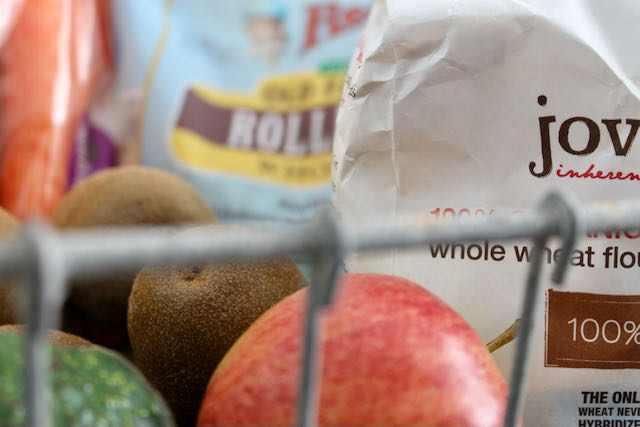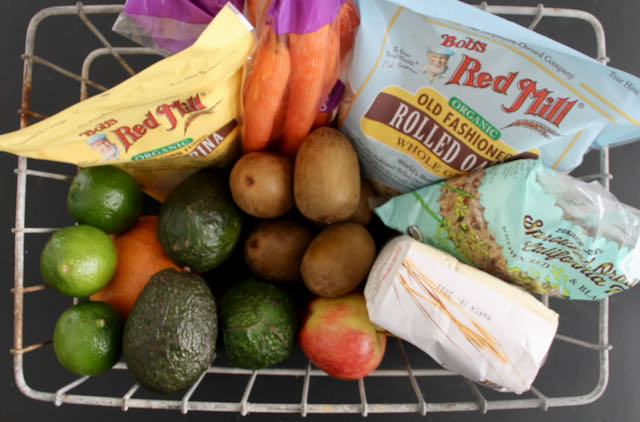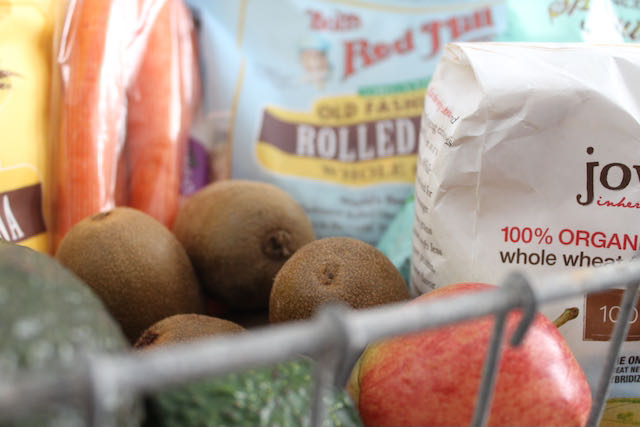Learn how to set up a grocery budget and stick to it. It’s a great way for your family to save money to use towards your financial goals.

As a self proclaimed savings nerd, I have spent years learning and practicing money saving strategies that work. They help my family save money on our groceries and allow us to eat healthy too.
I have learned that one of the best strategies to help save money on our grocery bill is to set up a grocery budget and actually stick to it.
I hope this helps your family set up a grocery budget that works for you and helps you save money too!
Determine Your Current Grocery Budget
The first step in setting up a grocery budget is to determine how much you are currently spending on groceries. The best way to do this is to track your spending on groceries for a month at a time. I recommend doing this for two to three months to get a good baseline. That means every time you purchase a lot of groceries or just run to the store for one or two items.
You also need to determine if you want to include any eating out in your grocery budget as well as household items like dish soap or laundry soap.
This choice will be different for each family. You have to see what works best for you and your family.
Our family includes household items in our grocery budget. While any eating out that we do comes out of a separate area of our budget.
Know What You Are Aiming For
You might be wondering how much your family should be spending on groceries each month. According to the USDA a family of 4 can spend anywhere from $585 on a thrifty plan and up to $1337 on a liberal plan.
I have a family of 4 and I personally think anything close to $1000 a month is extremely high.
A good rule of thumb to use is $100-$200 per person per month. If you have a family of 4 and you regularly use some money saving strategies when buying groceries, $400 a month is a good goal. If you prefer having more freedom with your food budget, then $200 per person or $800 a month might be a better goal for your family.
These are just some basic guidelines to help you get started. It’s important to remember that each family is different and has different needs.
For my family of 4, I budget $500 a month, or $125 per person per month. Also, this does not include any meat that we eat. That is a separate bill that we have once or twice a year when we purchase our meat from a local farmer.
See how our family eats healthy on a budget HERE.
Start To Slowly Challenge Your Budget
When it comes down to it, only you can determine what you can afford and what you are willing to spend on groceries each month. If you are currently spending around a thousand dollars each month, you will be able to challenge your budget much more than someone who is only spending a few hundred dollars. The key is to choose an amount that you feel comfortable with and try to cut back a little at a time.
Let’s say you currently spend eight hundred dollars a month on groceries for a family of 4. That’s two hundred a month per person.
Now let’s say you have a goal of only spending one hundred dollars a month per person. You would not want to try to cut your food budget by $400 the first month. Most likely that would not end well.
The key to being successful is to slowly cut back. You may begin by cutting your budget by $100 for the month. If you are unable to stick to the budget, then try it again next month.
The goal is to successfully feed your family of four on your new budget of $700 a month without feeling deprived. You can do this by starting to use a variety of savings strategies.
Once you comfortaby reach that goal, then it is time to cut back again. Try cutting your budget by another $100 the next month.
Continue to slowly cut your budget back until you reach a point where you cannot consistently be successful with your budget or you and your family feel deprived.
At that point, bump your budget back up slowly until you again are consistently successful. That is your ideal grocery budget.
By slowly cutting your budget, it allows you to practice using saving strategies that allow you to maintain the same quality of diet at a smaller price tag.

Break Down Your Grocery Budget
When determining and using your monthly grocery budget, it may be helpful for you to break down your budget.
First, determine if you want to shop once a month, biweekly, or weekly. Divide your monthly budget according to how you shop. So if you have a $600 budget and you plan on shopping biweekly, that means you have $300 to spend every two weeks.
Once you do that, try breaking down your budget even further. Rather than just spending $300 every two weeks, you could break it down more. Try spending $225 on groceries for two weeks, and $75 on building up your pantry.
My family shops twice a month with a $500 monthly budget. We spend $250 every two weeks. We try to spend $150 on produce and restocking what was used from our freezer and pantry. The other $100 is used to stock up on items we regularly purchase that are on sale. When we find items that we regularly use on sale, we purchase a large amount of them at one time. It is important to remember that when you do this, always make sure to leave some in the store for other customers.
Think Differently About Your Food Budget
You may not see the purpose or feel the need to challenge your food budget. However by simply changing how you think about your food bill, you begin to realize that you can still eat really well when you cut your budget and have extra money to use towards other financial goals at the same time.
What if you were able to cut your food budget by $300 every month? By saving $300 every month, your family would have $3600 at the end of the year. You could use that to go on a nice vacation. Or maybe you want to start saving for your child’s college fund. By saving and investing $300 a month for your child’s college fund, you could have $51,927.45 after ten years if you average a 7% return each year.
Cutting your food budget is the easiest way to find extra money to reach financial goals. Since it is a flexible expense, you have the ability to determine what works best for you and your family.

Know Your Purpose And Stick To It
Creating a grocery budget and really sticking to it does take discipline. However, the benefits are definitely worth it.
In order to stay committed to your budget and reap the benefits, you have to know your purpose. What do you want to do with your savings?
Maybe you want to start an emergency fund, start investing, or pay extra on your mortgage.
By having a plan, you will be much more motivated to find a budget that works for you and your family, stick to it, and use your savings towards your financial goals. Otherwise, without a plan, you will likely just eat that money away.
Be Committed
In order to stick to your food budget, you have to be committed. Without being committed to a plan, you’ll find that it is easy to go over budget and lose those extra savings for the month.
When you are committed, you see the benefits of sticking to your budget. You also start to quickly see progress towards your financial goals.
Leave a Reply